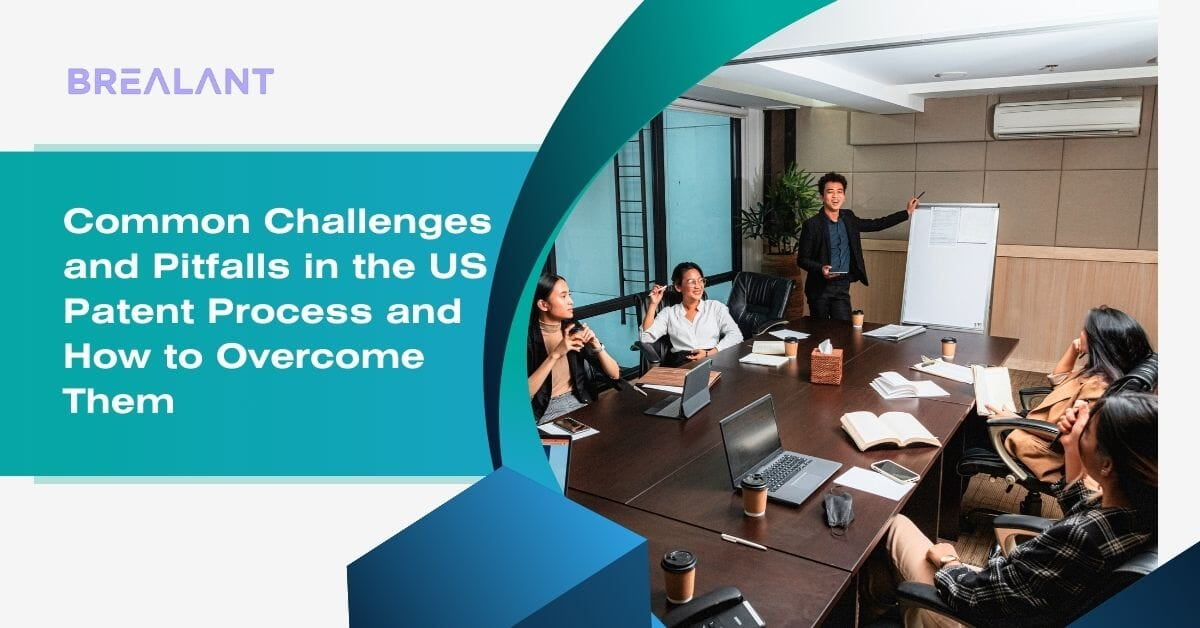
If a tech business or any business wants to protect and promote its technology or product, then filing a patent application is an essential first step.
But you don’t have any prior experience maintaining a patent portfolio. In that case, it may be obvious to make a mistake throughout a filing patent.
Here, we will discuss common challenges and pitfalls in the US Patent Process and how to overcome them.
Let’s begin!
Some of the Challenges and pitfalls in the US patent process
- Your approved patent may be revoked: Congratulations! You are now happy to be a patented inventor after your patent attorney or agent successfully reconciled with your examiner to get your patent issued. But that may change if a wealthy business determines that your patent is inconveniencing it and challenges it before the Patent Trial and Appeal Board (PTAB) by submitting an inter partes review. The America Invents Act of 2011 created the PTAB. You heard it right. The United States Patent & Trademark Office (USPTO), which originally granted your patent, later determined that oops! Something went wrong, and they withdrew it.
- Not all of the prior art is accessible: As newness is a prerequisite for a patent, “prior art” proves an invention isn’t unique. Patents are not the only form of prior art. The prior art includes printed materials like academic papers and magazine articles, as well as oral presentations at conferences, exhibits at trade exhibitions, speeches, YouTube videos, and other online content. Inventors are not able to find the prior art. It is a problem because the Patent Trial and Appeal Board will consider previous art as justification to reject your patent application’s claims and invalidate your invention.
- Not financially prepared for a long and expensive process: One of the challenges and pitfalls in the US patent process that many businesses face is expenditure. Many businesses believe that seeking patent protection is the only obvious next step when presented with a new invention. However, submitting a patent application costs money and takes time:
- A US patent normally costs tens and hundreds of thousands of dollars.
- The USPTO may take two to three years to approve your patent application.
- A too-specific application is filed: A more specific patent application could stop you from using all available revenue-generating opportunities, such as licensing your property across several markets. After knowing the challenges and pitfalls in the US patent process, we will now discuss some rules that help you avoid these pitfalls.
Rules for avoiding challenges and pitfalls in the US patent process
- Maintain a Paper Evidence: It is crucial to document and record how each innovation was made correctly if there is a question about who produced an idea, and maintaining a complete paper showing how, when, and by whom is helpful.
- Use confidential agreements: It’s crucial to make sure a valid confidential agreement is signed before revealing any new product or idea to a supplier, client, or possible investor. In addition to ensuring that the invention remains private, an adequately completed confidential agreement is an essential component of the paper evidence outlining who has the innovation’s right.
- Conduct an initial patent search: It is important to check out the innovation’s field before putting a lot of time and energy into it to make sure that no possibly unlawful patents are hindering the development of the idea.
- Try to file a patent application before disclosing it to anyone: It is strongly recommended that a patent application must be submitted before the invention’s specifics are made public and before it is made available for purchase. An early public disclosure or selling may significantly harm your patent rights.
- Looking for a professional legal attorney: You may legally create and submit your patent application. But still, it is a mistake.
The wording chosen to write the description and claims is what makes a patent application strong. A single word used incorrectly has the power to alter the meaning of your application completely, drastically reduce its potential, or even invalidate it entirely.
Employing a qualified expert with legal training in patent protection and technical knowledge that is suitable to the scope of your patent protection is crucial for this reason.
Want solutions to the patent problems? Brealant Ltd. is there for your help!
From the above discussion, now you know about the challenges and pitfalls in the US patent process. As per the above explanation, you know that any patent application needs care while filing. It requires legal descriptions and claims. Without the help of a legal advisor, no person can file it technically.
That is why it is important to take the help of an expert legal advisor. So, what are you waiting for? Contact Brealant Ltd. and complete your patent filing process smoothly.

